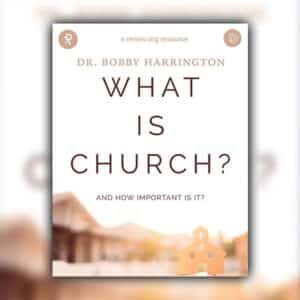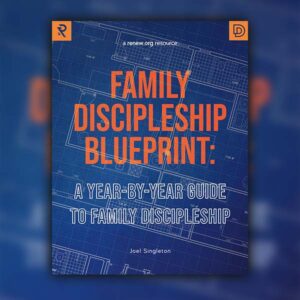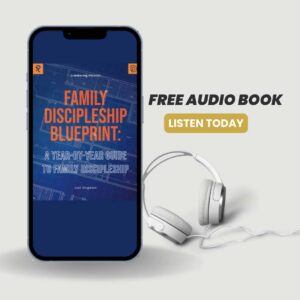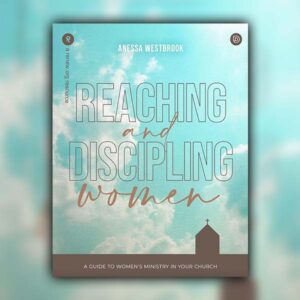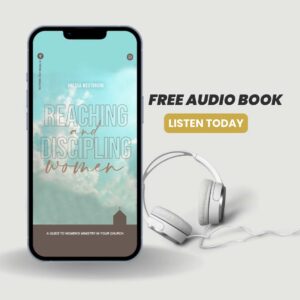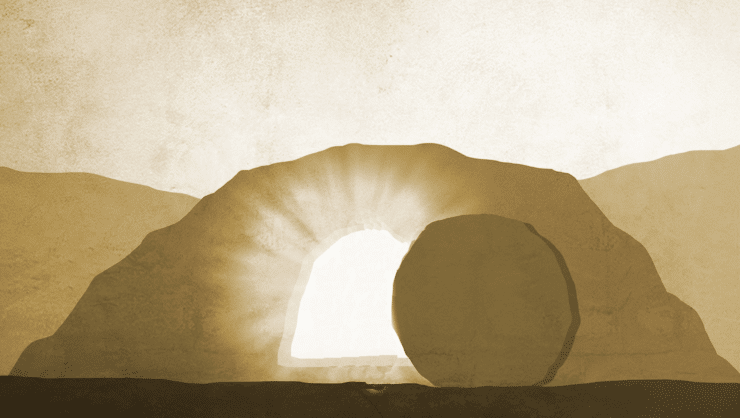Discipling One-To-One

There has been lots of discussion in disciple-making circles about the best size of group for your discipling relationships. Which size do you think is the best size?
Some believe the best group is a missional community (20-50 people), some believe small group (10-15 people) is best, while others believe the transparent size group is optimal (4-5 people). Alex Absalom and I wrote a book several years ago called, Discipleship that Fits, which talks about the advantages/disadvantages for each size of group.
But we did not spend time writing about one-to-one discipling.
Steve McCoy is the leader of Small Circle and he is one of the country’s leading authorities on this kind of discipling relationship. It is an important topic and we are pleased to share our interview with him.
– Bobby Harrington
Steve, what has sparked the passion for disciple-making in you?
When I became a Christian 40 years ago, I was studying to be a concert pianist in Boston. I had been on a full-throttle, spiritual search for a few years, and finally landed in a multi-ethnic church where the pastor (Pastor Titus) was from India.
After exchanging my old life for Christ’s new one on May 2, 1982, Pastor Titus invited me to live in his apartment complex, being unaware that I was the only person in the entire building who was not from India. It was an incredible cultural saturation.
Every Thursday night, Titus would invite me to his apartment flat to have dinner with he and his family. Following dinner, he and I would have time alone at a table for two as he, like Paul, poured into a young Timothy. We were on this journey together for a year and a half.
Not knowing anything about the evangelical culture, I made an assumption that this Paul-Timothy strategy was the ‘norm’ for disciple making. My joke has been to Christians that I thought you guys were like Alcoholics Anonymous – when you sign up, you get a sponsor!
Unfortunately, as most of us know, intentional disciple making at this level is not the norm at all; in fact, it’s rare. This was shocking for me since the impact at this table for two was significant.
You mention the impact of a Paul-Timothy approach. Can you articulate the distinctions?
Absolutely. Because I was full-throttle, I immediately jumped into the worship ministry (because of my music skill set), as well as a Bible study group. But there were two particular areas in the one-to-one setting that were radically different.
The first was content. At a table for two, the content was customized. The beauty of the one-to-one setting is that it is like a tutoring session when it comes to content. In a group setting (which has great benefits), there is only so much time, week after week, that any particular person can receive personal attention – that is not the design of group life. But at a table for two, you can dig down deep, ask questions, get customized clarity, and absorb the conversation at an entirely different level.
The second area that was distinctive at the one-to-one setting was the relationship. After time, relationships in a group setting become close. At a table for two, relationships will be confidential. This is what we see, for example, in the relationship between David and Jonathan, Paul and Timothy, Jesus and John, and so on.
As you speak so highly of one-to-one disciple making, are you opposed to groups?
Oh, definitely not. We have dozens of groups in our local church and I’m very pro-group – both conventional sizes of 10-12 people, as well as micro-groups of 3-4. I’ve been in the same men’s group for the past 7-8 years and I love my group. I intentionally don’t lead it because I wanted a place just to be in the mix of a group of guys. We speak honestly in the group, and there definitely is a level of pouring into each other.
It really comes down to expectations. Having been in groups for 40 years, I know to expect closeness in relationships. But after discipling a number of men from those groups at a one-to-one level, there is unquestionably a marked distinction in the level of confidentiality, safeness, and as a result, life change at an entirely different dynamic.
Talk to me more about your observation of life change at a table for two.
I was interacting with Larry Crabb a few years ago because I had just finished reading his book, Becoming a True Spiritual Community. In that book, Larry makes a statement that is critical to understanding true disciple making. He writes, “I have a growing conviction that all substantial change depends on people experiencing a certain kind of relationship.”
Larry and I communicated back and forth on the topic of life change that we’ve observed in both group settings as well as a one-to-one dynamic. Here’s an excerpt from one of his email messages:
Relational depth is more easily reached one-on-one that in small groups. My one-on-one time with folks has reached places we hadn’t reached in group. For a small group to hit significant depths, one: it is rare and two, it requires many years, solid commitment, and a clear focus on knowing each other. I don’t believe, however, that the best small group can substitute for one-on-one time. It’s there, that conversations that matter, seem to develop best. (Larry Crabb)
Here’s the bottom line: When a relationship reaches a certain level of depth and safeness, there is a significantly higher probability of life change. This is the most exhilarating aspect of growing relationally deep at a table for two. It’s there where we can better exercise Ephesians 4:15 (speaking the truth in love), James 5:16 (confessing our sins to each other), and so on.
Your approach to disciple making is called smallcircle. What’s in the name?
If you picture the relational settings we have in the church culture in terms of circles, a Big Circle would represent collective worship, and a Mid Circle would represent groups of some kind (home group, classes, Bible studies, micro-groups). Both of these circles are critically important and each of them are beautifully distinctive.
Our approach to smallcircle is to add to the Big and Mid Circles a third dimension of the Small Circle. That is a Paul-Timothy, David-Jonathan, one-to-one, table-for-two approach. Over the past 5-6 years, our teams have traveled to many global locations and what we observe is that there is great intentionality toward the Big and Mid Circle, but not so much with the Small Circle. This is the work that we are contributing to the church culture.
How has it been received?
We’ve seen an enormous appetite for this level of disciple making because most leaders are looking for life-changing results, not merely information transfer.
Our smallcircle approach and tools are now in over 100 countries and in roughly 50 languages. But more than this number of the smallcircle tools being present, we’re witnessing unparalleled life change and spiritual growth – that’s where the jazz is.
You mentioned tools. What does smallcircle offer to equip people to get to this intentional level of table-for-two disciple making?
A number of years ago, God very tangibly convinced me to release these tools in ways where there would be no cost to the user. We offer free PDF downloads with no premium upcharge lurking around the corner! We also have a robust mobile app that has even more content than the printed versions.
I am a pastor and a church planter. I recognize that the vast majority of churches in the US do not have plump budgets, so we wanted churches to be able to use these tools and not have cost be an obstacle. On the global level, many countries, as we all know, are impoverished. We cover the cost of all translations, and when needed we help with the printing of books.
How would someone get these free tools?
You can join with us in person at the national disciple making forum in October where we will lead one of the 18 tracks (click here for more). You can also go to go to smallcircle.com and you’ll see a GET THE TOOLS button. Simply click on that and you’re on the way. I also strongly recommend that you also check out the FREE COURSES button, which will take you to an extensive library of short videos on everything A to Z on smallcircle. There’s no charge for these videos.
Steve, thanks for taking the time to share about the exciting work that God is doing through smallcircle around the world.
I’ve been part of the Discipleship.org tribe for a number of years and it’s a privilege to advance the work of disciple making shoulder to shoulder with such an incredible group of men and women. The church culture needs the work of Discipleship.org as they champion the Great Commission with so many diverse approaches to reach the same target: Go and make disciples of all nations.
For King Jesus,
Steve McCoy
If you have enjoyed reading this, please consider joining our email list!
